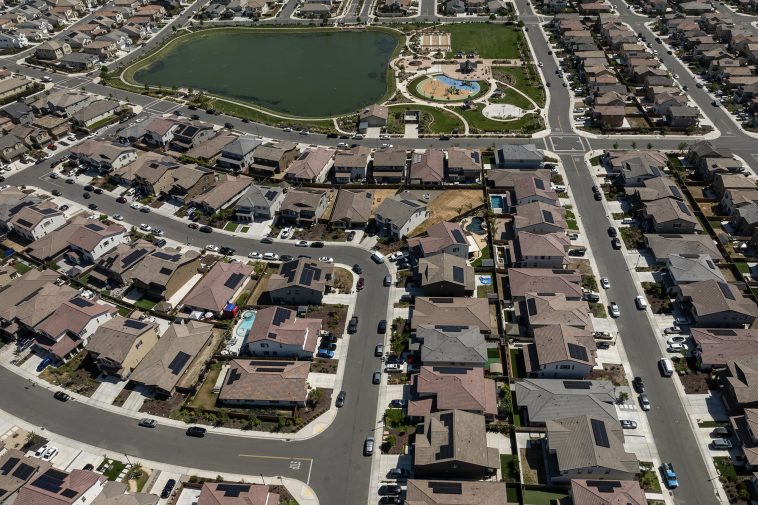One of California’s many socioeconomic divisions is homeownership.
California has the nation’s second-lowest percentage of residents living in homes that they or their families own — 55.5%, one percentage point higher than New York. But those owners are sitting on immense equity, roughly $2 trillion, thanks to the state’s highest-in-the-nation home prices.
Last month, the median price of single-family home in California was $868,150, according to the California Association of Realtors, more than twice the national median.
“Monthly payments for a newly purchased mid-tier home — including mortgage, taxes and homeowners’ insurance — have increased dramatically over the last couple of years,” the nonpartisan Legislative Analyst’s Office noted in a recent report. “Payments for a mid-tier home were nearly $6,000 a month in June 2024 — an 84% increase since January 2020. Payments for a bottom-tier home were over $3,600 per month — an 89% increase since January 2020.
“Annual household income needed to qualify for a mortgage on a mid-tier California home in June 2024 was about $239,000 — over two times the median California household income in 2022 ($95,500),” the report continued.
There is, as with other economic indices, a very strong racial component to California homeownership.
Public Policy Institute of California researchers this week declared that “persistent racial homeownership gaps run deep across the state — and these gaps have contributed to substantial wealth disparities across demographic groups.
“In 2023,” PPIC fellows Marisol Cuellar Mejia, Hans Johnson and Julien Lafortune continued, “Latino homeownership rate stood at 45.9%, or 18.5 points below that of white households. The Black homeownership rate was even more worrisome at 36.6%, or 27.9 points below the rate for white households. Meanwhile, at 61.5%, the rate among Asian Americans was only 3 percentage points below.”
Given the prominence of home equity in family net worth, the ownership gap strongly affects what economists call “generational wealth.”
Those who bought homes in California when they were cheap — as low as $25,000 for new houses a half-century ago — can bequeath many hundreds of thousands of dollars in equity to their offspring for down payments to continue the ownership cycle and thus build even more generational wealth.
Conversely, as prices increase, ownership becomes an increasingly forlorn dream for those on the other side of the real estate divide. Lacking six-digit incomes to qualify for mortgages, they must either remain renters or migrate to rural areas, where homes are still relatively inexpensive. Many leave for other states.
In September, median prices in California ranged from a high of $2.1 million in San Mateo County to $247,500 in remote Trinity County. Nationally, median prices are as low as $218,000 in West Virginia, which has the highest ownership rate, just shy of 80%. Texas and Florida, two populous states often considered California rivals, have much lower medians, $310,000 in the former and $418,000 in the latter.
So is there anything California could do to narrow the homeownership gap?
Given that it reflects persistent income disparities, there’s not a lot that could be done directly, PPIC researchers concluded.
“Over the longer term, addressing the underlying causes of income inequality, such as disparities in educational attainment and access to better jobs, can increase the odds of homeownership — and offer a pathway to building wealth,” Cuellar Mejia, Johnson and Lafortune wrote.
Vice President Kamala Harris has promised that, if elected president, she would provide up to $25,000 in down payment assistance for first-time homebuyers. While that might make a difference in states with low prices, such as West Virginia, it would be just a drop in the bucket in California, where $200,000 down payments are not unusual.
Moreover, it could result — as so many federal subsidies do — in just driving prices higher, with college loans being a prime example.
###
CalMatters is a public interest journalism venture committed to explaining how California’s state Capitol works and why it matters. For more stories by Dan Walters, go to Commentary.


Leave a Reply